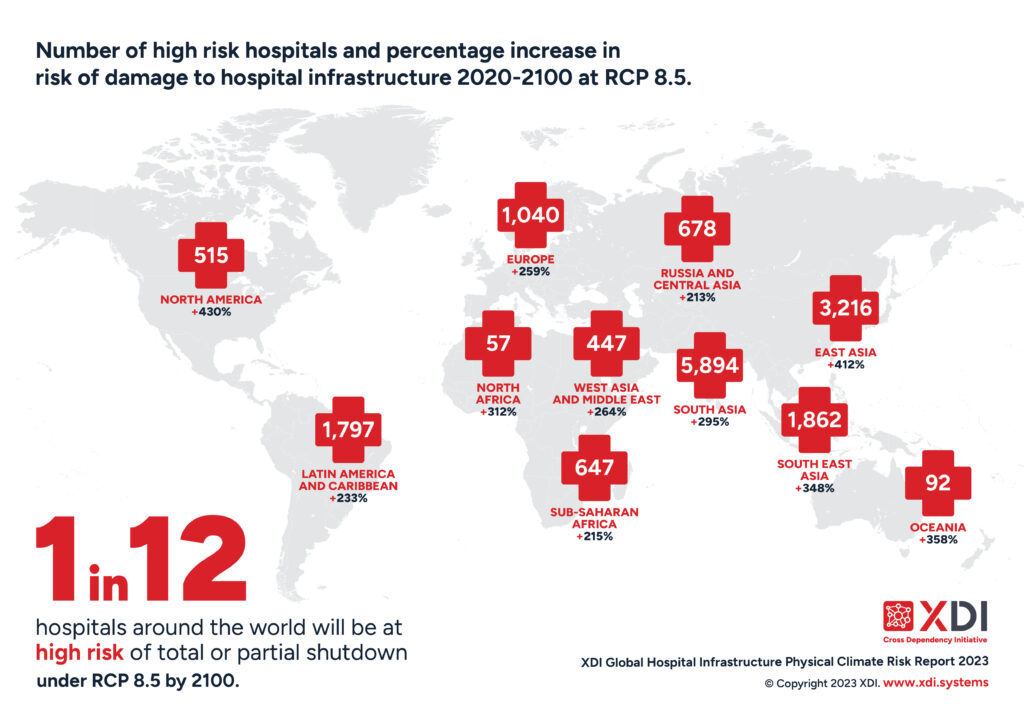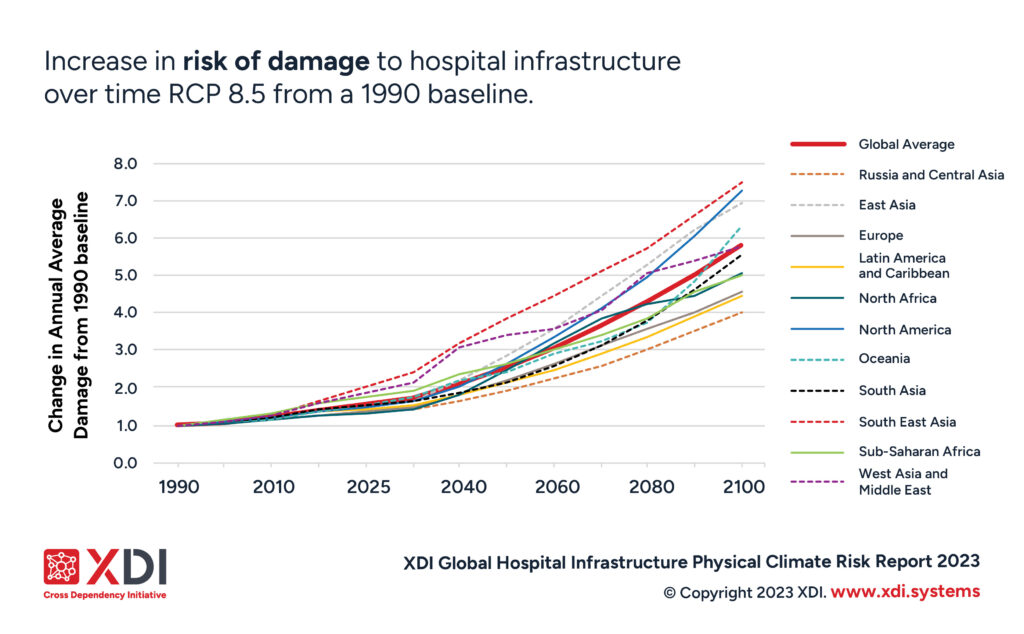One in twelve hospitals around the world would be at serious risk of closure if greenhouse gas emissions are not cut dramatically, new research suggests. Extreme weather events could put a total of 16,245 at risk of total or partial shutdown by the end of the century. Although adaptation may be sufficient in some cases, relocation will be the only option for many.
Hospitals in low and middle-income countries are the most vulnerable, Australian climate risk analytics firm XDI found Asia and Africa among the most at risk. For example, one in seven in Indonesia would be at risk by 2050, and one in five by 2100, if emissions remain high. This is similar in the Philippines, Nepal, Vietnam, Peru and Laos, where at least one in five hospitals will be at high risk by the end of the century. India, China, and Japan have the highest number of hospitals at risk of shutdown under high emissions.
This year has seen extreme weather events driven by climate change, such as droughts, wildfires, and flooding, affect countries all over the world and have already led to hospitals shutting down. If emissions are high, the risk of damage to hospitals could increase more than four-fold by the end of the century – this risk would be significantly reduced with the rapid phase-out of fossil fuels.
XDI analysed the risk at 200,000 hospitals worldwide.
Global threat
The report found 5,120 hospitals at risk in India, more than any other country, with 1,302 at risk in China. One in ten hospitals in India could be at risk by 2100. In Bangladesh, the proportion would be one in seven.
In South Africa, the research found that there would be a 156% increase in the risk of damage to hospital infrastructure if emissions were high at the end of the century. The equivalent figures for Nigeria and Senegal were 147% and 114% respectively.
The risks of damage to hospital infrastructure are increasing rapidly – the proportion of hospitals in Kenya at risk of closure could be four times higher than in 2020 by the end of the century.
Hospitals in developed countries would also be at much greater risk. In the US, twice as many hospitals would be at risk of closure in 2100 compared to 2020.
Europe would also be hit, with one in 20 hospitals at risk by 2100 in England, France, Italy, Poland and Türkiye







